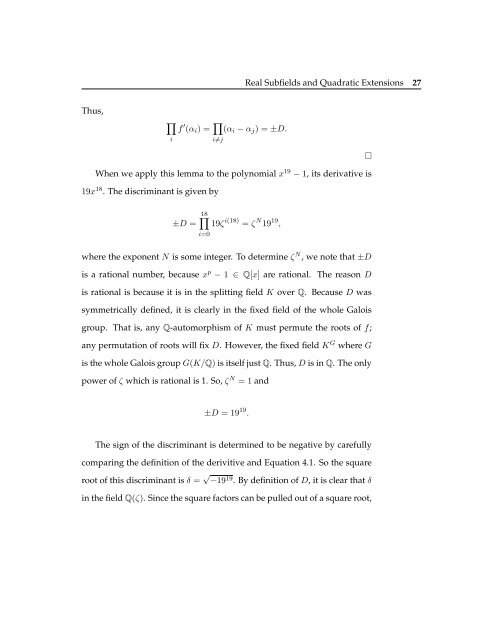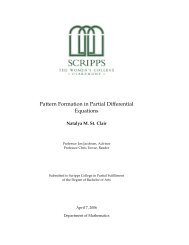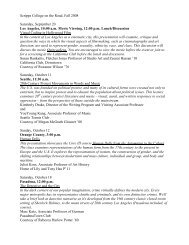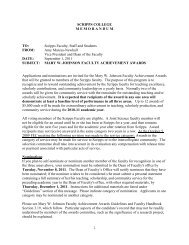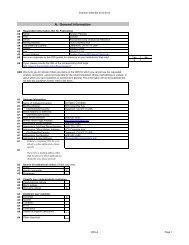Galois Theory: A Study of Cyclotomic Field ... - Scripps College
Galois Theory: A Study of Cyclotomic Field ... - Scripps College
Galois Theory: A Study of Cyclotomic Field ... - Scripps College
You also want an ePaper? Increase the reach of your titles
YUMPU automatically turns print PDFs into web optimized ePapers that Google loves.
Real Subfields and Quadratic Extensions 27<br />
Thus,<br />
∏<br />
f ′ (α i ) = ∏ i − α j ) = ±D.<br />
i<br />
i≠j(α<br />
When we apply this lemma to the polynomial x 19 − 1, its derivative is<br />
19x 18 . The discriminant is given by<br />
□<br />
±D =<br />
18∏<br />
i=0<br />
19ζ i(18) = ζ N 19 19 ,<br />
where the exponent N is some integer. To determine ζ N , we note that ±D<br />
is a rational number, because x p − 1 ∈ Q[x] are rational. The reason D<br />
is rational is because it is in the splitting field K over Q. Because D was<br />
symmetrically defined, it is clearly in the fixed field <strong>of</strong> the whole <strong>Galois</strong><br />
group. That is, any Q-automorphism <strong>of</strong> K must permute the roots <strong>of</strong> f;<br />
any permutation <strong>of</strong> roots will fix D. However, the fixed field K G where G<br />
is the whole <strong>Galois</strong> group G(K/Q) is itself just Q. Thus, D is in Q. The only<br />
power <strong>of</strong> ζ which is rational is 1. So, ζ N = 1 and<br />
±D = 19 19 .<br />
The sign <strong>of</strong> the discriminant is determined to be negative by carefully<br />
comparing the definition <strong>of</strong> the derivitive and Equation 4.1. So the square<br />
root <strong>of</strong> this discriminant is δ = √ −19 19 . By definition <strong>of</strong> D, it is clear that δ<br />
in the field Q(ζ). Since the square factors can be pulled out <strong>of</strong> a square root,


